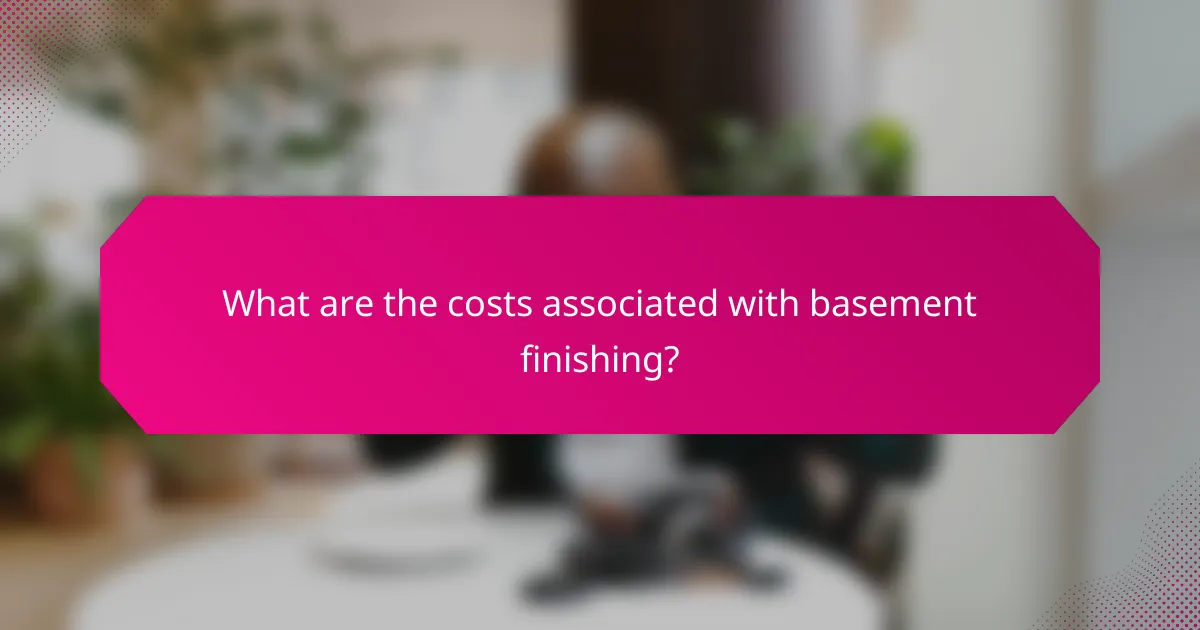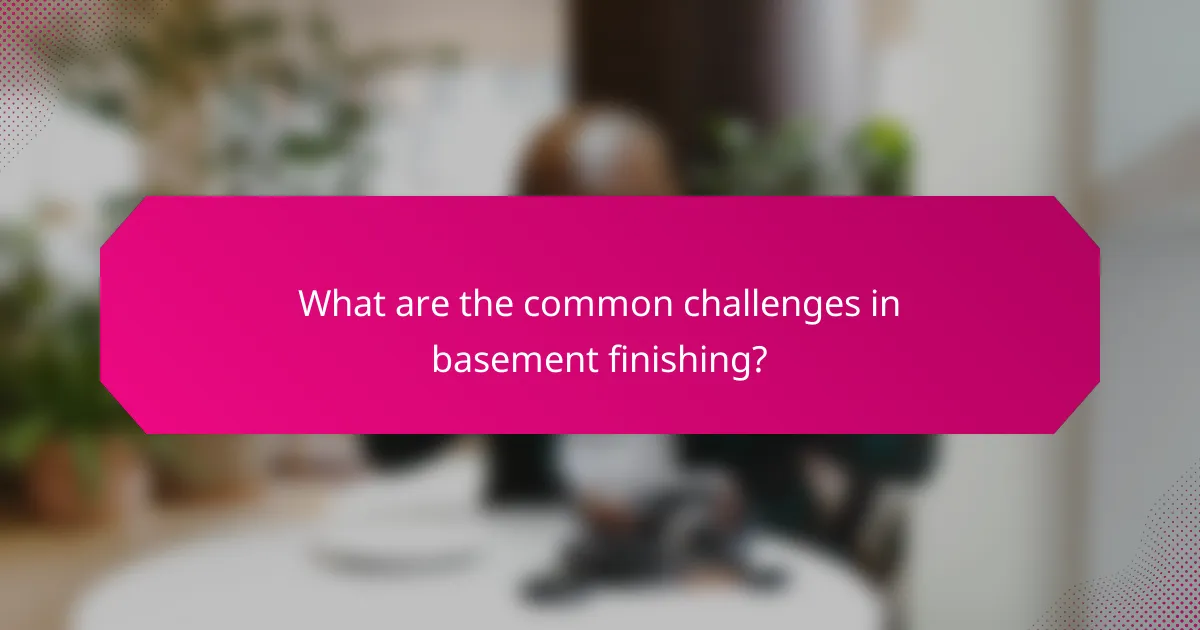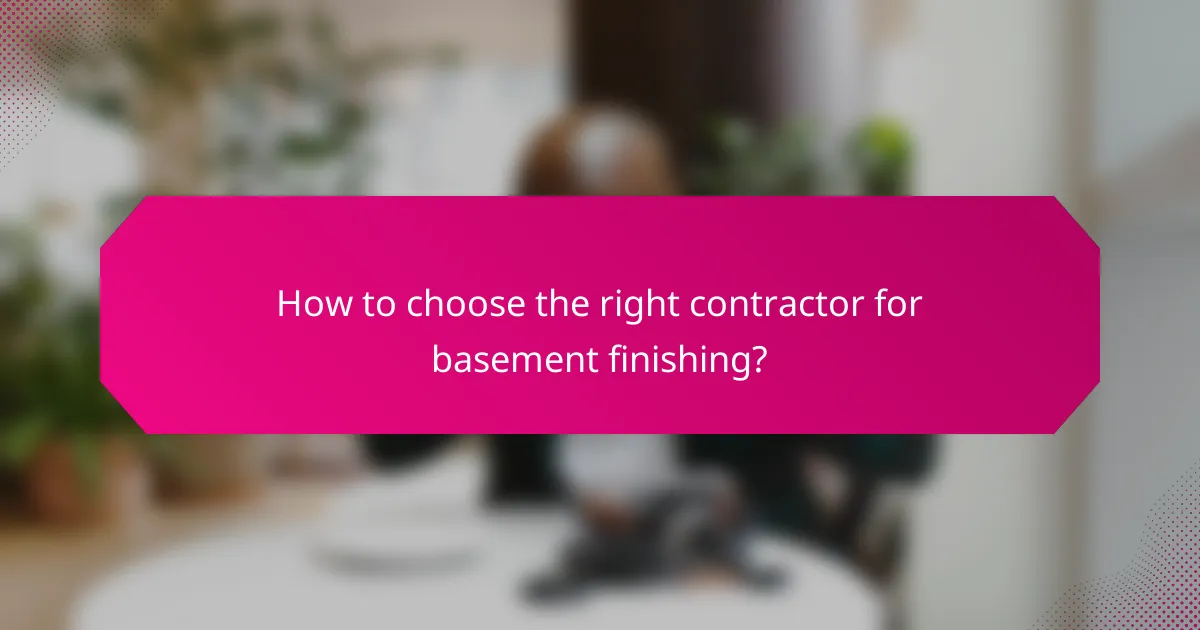Finishing a basement can dramatically increase a home’s value by converting unused space into functional living areas. This transformation not only adds valuable square footage but also offers homeowners versatile options, such as a home office, guest accommodation, or an entertainment area, making it an attractive feature for potential buyers.

How can basement finishing increase home value in the UK?
Finishing a basement can significantly enhance a home’s value in the UK by transforming unused space into functional living areas. This improvement not only adds square footage but also appeals to buyers looking for versatile options in their homes.
Higher resale prices
Homes with finished basements often command higher resale prices compared to those without. On average, homeowners can expect to recoup a substantial portion of their investment, sometimes ranging from 70% to 80% of the renovation costs when selling. This increase in value can be particularly pronounced in urban areas where space is at a premium.
Attracts potential buyers
A finished basement can be a key selling point that attracts potential buyers. Families often seek additional living space for activities, guest accommodations, or home offices, making a finished basement highly desirable. This added functionality can differentiate a property in a competitive market.
Improved marketability
Finishing a basement enhances a home’s overall marketability by showcasing its full potential. Well-designed basements can be marketed as versatile spaces, such as playrooms, gyms, or entertainment areas. Effective staging and presentation of these spaces can further entice buyers, leading to quicker sales and potentially higher offers.

What are the best uses for finished basements?
Finished basements can serve multiple purposes, enhancing both functionality and value in a home. Common uses include creating a home office, providing guest accommodation, and establishing an entertainment area.
Home office space
A finished basement can be an ideal location for a home office, offering privacy and separation from household distractions. Consider soundproofing the space and ensuring adequate lighting to create a conducive work environment.
When designing your home office, think about incorporating built-in storage and a comfortable workspace. Internet connectivity is crucial, so ensure that your basement is equipped with reliable Wi-Fi or wired connections.
Guest accommodation
Transforming a finished basement into guest accommodation can provide a welcoming space for visitors while maintaining privacy. This can be achieved by adding a bedroom, bathroom, and small kitchenette.
When planning for guest accommodation, consider local regulations regarding egress windows and fire safety. Furnish the space with essentials like a bed, seating, and storage to make it comfortable for short or extended stays.
Entertainment area
An entertainment area in a finished basement can serve as a family room, game room, or home theater. This versatile space can be tailored to your interests, whether that includes a large screen for movies or a pool table for games.
To optimize your entertainment area, invest in comfortable seating and soundproofing to enhance the experience. Consider adding a wet bar or mini-fridge for convenience, making it a perfect spot for gatherings and relaxation.

What are the costs associated with basement finishing?
The costs associated with basement finishing can vary widely based on several factors, including the size of the space, the quality of materials, and the complexity of the project. Homeowners can expect to invest anywhere from a few thousand to tens of thousands of dollars to transform an unfinished basement into a functional living area.
Average cost per square foot
The average cost for finishing a basement typically ranges from $30 to $100 per square foot. This estimate includes materials, labor, and any necessary permits. For a standard 1,000 square foot basement, total costs can fall between $30,000 and $100,000, depending on the choices made.
Factors affecting pricing
Permits and inspections may also add to costs, especially in areas with strict building codes. Homeowners should budget for these potential expenses to avoid surprises during the project.
Potential return on investment

What are the essential steps in the basement finishing process?
The basement finishing process involves several key steps that transform an unfinished space into a functional living area. These steps include planning and design, obtaining necessary permits, and executing construction phases to ensure a successful renovation.
Planning and design
Effective planning and design are crucial for a successful basement finishing project. Begin by determining the intended use of the space, whether it’s for a family room, guest suite, or home office. Create a layout that maximizes the available square footage while considering factors like natural light and access to utilities.
Consider the style and aesthetics that will complement the rest of your home. Draft a design that includes essential elements such as flooring, wall finishes, and lighting. Utilizing software or hiring a designer can help visualize the final outcome and streamline the decision-making process.
Permits and regulations
Before starting construction, check local building codes and regulations to determine what permits are required for your basement finishing project. Most municipalities require permits for structural changes, electrical work, and plumbing installations.
Obtaining the necessary permits not only ensures compliance with regulations but also protects your investment. Failing to secure permits can lead to fines or complications when selling your home in the future. Consult with local authorities or a contractor to understand specific requirements in your area.
Construction phases
The construction phase of basement finishing typically involves several stages, starting with framing and insulation. This includes building walls, installing windows, and ensuring proper insulation to maintain temperature control and energy efficiency.
Next, focus on electrical and plumbing work, which should be completed before drywall installation. After that, drywall is hung and finished, followed by painting and flooring installation. Finally, add fixtures and furnishings to complete the space, ensuring it meets your design vision.
Throughout the construction process, maintain clear communication with contractors and regularly inspect the work to ensure it aligns with your expectations and local building standards.

What are the common challenges in basement finishing?
Basement finishing presents several challenges that can impact the overall success of the project. Key issues include moisture control, insulation requirements, and ceiling height limitations, all of which need careful consideration to create a functional and comfortable living space.
Moisture control
Moisture control is crucial in basement finishing to prevent mold growth and structural damage. Basements are often prone to dampness, so it’s essential to assess the area for any water intrusion before beginning renovations.
Consider installing a sump pump or a dehumidifier to manage excess moisture. Additionally, applying waterproofing sealants to walls and floors can help create a barrier against water seepage.
Insulation requirements
Proper insulation is vital for maintaining a comfortable temperature in a finished basement. Insulation helps regulate heat and can prevent cold drafts, making the space more livable year-round.
Use materials that meet local building codes, such as fiberglass batts or spray foam, to insulate walls and ceilings. Ensure that insulation is installed correctly to avoid gaps that could lead to energy loss.
Ceiling height limitations
Ceiling height can significantly affect the usability of a finished basement. Many basements have lower ceilings than the rest of the house, which can make the space feel cramped and less inviting.
Check local building codes for minimum ceiling height requirements, typically around 7 feet in many areas. If the height is insufficient, consider options like lowering the floor or using a drop ceiling to create a more open feel.

How to choose the right contractor for basement finishing?
Choosing the right contractor for basement finishing involves evaluating their experience, reputation, and pricing. A well-selected contractor can ensure a successful project that enhances your living space and adds value to your home.
Checking credentials and reviews
Start by verifying the contractor’s credentials, including licenses and insurance. Look for professionals who are registered with local building authorities and have liability insurance to protect against potential damages.
Read online reviews and testimonials from previous clients to gauge their satisfaction. Websites like Angie’s List or Yelp can provide insights into the contractor’s reliability and quality of work.
Obtaining multiple quotes
Request quotes from at least three different contractors to compare pricing and services. This will give you a clearer picture of the market rates for basement finishing in your area.
When reviewing quotes, ensure that they include a detailed breakdown of costs, such as materials, labor, and any additional fees. This transparency helps you make an informed decision and avoid unexpected expenses.
Understanding warranties and guarantees
Inquire about warranties and guarantees offered by the contractor. A reputable contractor should provide a warranty for their workmanship and the materials used, typically ranging from one to ten years.
Clarify what the warranty covers and the process for making claims. Understanding these terms can protect you from future issues and ensure that your investment is safeguarded.
